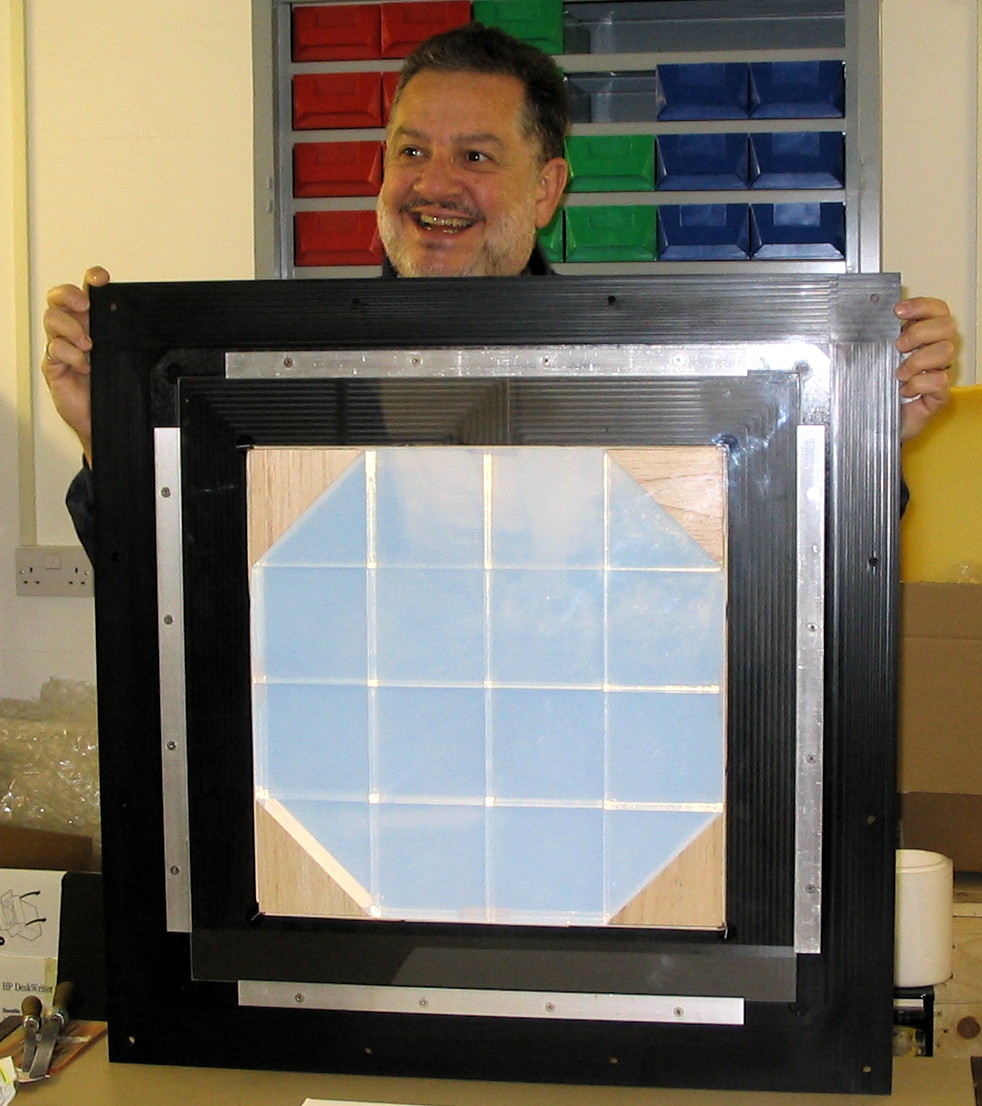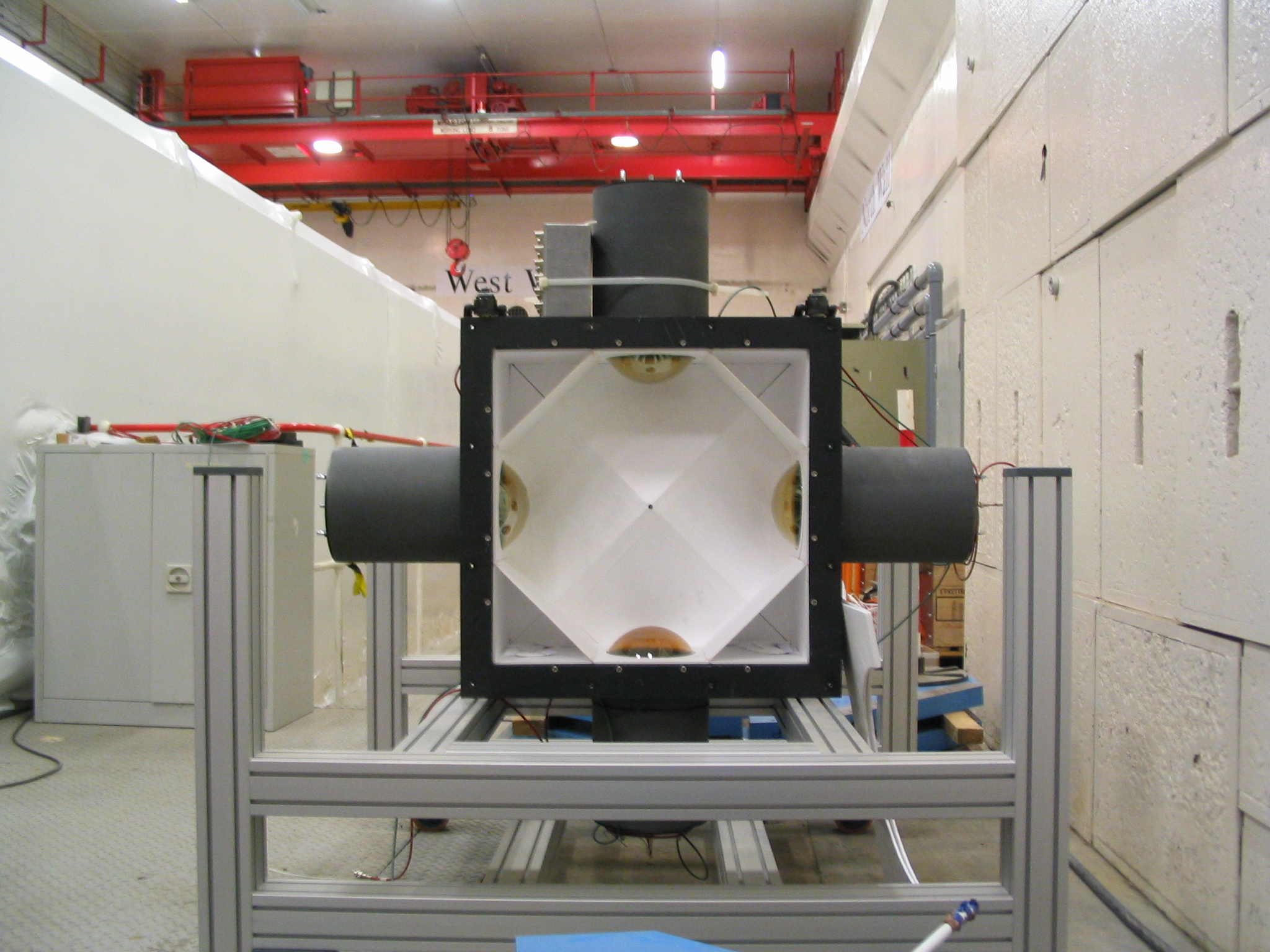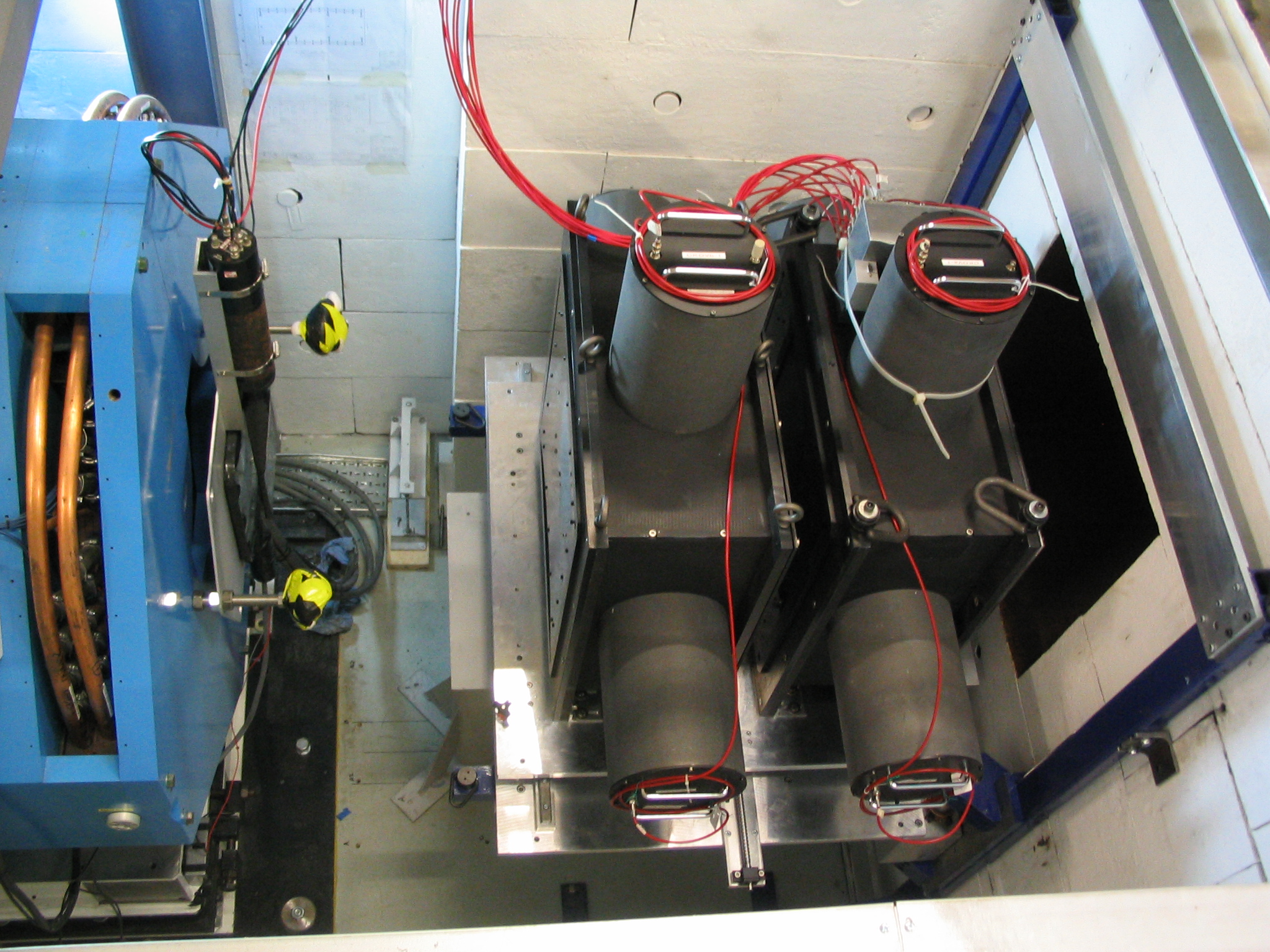![[MICE]](images/micearoundthering.gif)
![[MICE]](images/micearoundthering.gif)
![[MICE Detector]](images/mice_det.gif)
An International Muon Ionization Cooling Experiment (MICE) is an important milestone towards a Neutrino Factory. The neutrino factory is a completely new type of accelerator and offers many new challenges. Probably the largest novelty from the point of view of accelerator physics is ionization cooling. MICE was proposed to carry this out at the Rutherford Appleton Laboratory (RAL) near Oxford in the United Kingdom.
The MICE collaboration has designed an experiment in which a section of an ionization cooling channel is exposed to a muon beam. The main goals of the MICE are:
The MICE collaboration has successfuly demonstrated ionization cooling using 3 different target materials. They were Liquid Hydrogen, Lithium Hydride and Polyethylene. See: First Demonstration of Ionization Cooling by the Muon Ionization Cooling Experiment.

![[Magnet Lattice]](images/maglattice2.png)


The University of Mississippi had designed, built, and installed a pair of aerogel Cherenkov counters for MICE at the Rutherford Laboratory. The upstream Cherenkov is problematic in that it must separate muons and pions very well in a momentum range from 200 to 300 MeV/c. Matsushita has produced n=1.07 and n=1.12 aerogel samples for us. These indices are unusually high. They allow a two threshold Cherenkov counter solution. We have tested these new aerogels with 120 GeV/c protons at Fermilab and 100 MeV positrons, pions and muons at MICE.
 Aerogel Layout |
 Cherenkov Top View |
 Cherenkov Detectors Location |
Press release announcement of UK Funding for MICE
Animation of the MICE experiment and Muon Colliders